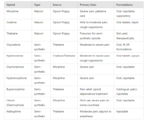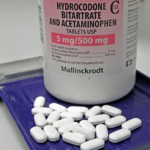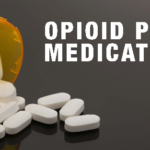The term “narcotics” is frequently used in a broad and sometimes informal manner. It tends to evoke thoughts of all substances that are either socially stigmatized or illegal, even including products like “legal bud.” In certain contexts, such as anti-drug legislation, this word is used interchangeably with “drugs.”
Additionally, the term “narc” is commonly employed to refer to a narcotics agent, a law enforcement officer dedicated to combating drug-related activities and enforcing drug laws.
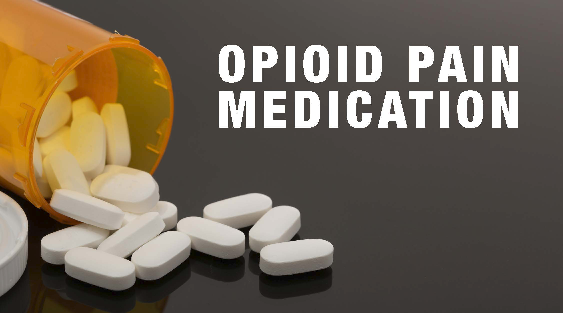
However, when medical professionals use the term “narcotics,” it carries a more specific and restricted meaning, referring to a distinct category of drugs. This category differs significantly from substances like psychedelics such as LSD or sedative-hypnotics like alcohol and barbiturates. While some narcotics are illegal and pose substantial risks (e.g., heroin), others are prescription medications with a diverse range of legitimate medical applications, such as pain management and diarrhea control.
The use of narcotics, also known as opioids, is typically reserved for the management of moderate to severe pain when other pain-relief methods have proven inadequate. Opioids are potent medications that work by binding to specific receptors in the brain and spinal cord to reduce the perception of pain. It’s important to use them judiciously and under the guidance of a healthcare provider due to their potential for addiction and other side effects.
How Many Kinds of Narcotics Are There ?
“Narcotics” is a term that encompasses a wide range of drugs, including prescription medications and illicit substances, which have the potential for abuse and can affect the central nervous system. Here are some examples of narcotics, categorized by type:
- Opioids: Opioids are a major category of narcotics. Common opioids include:
- Sedative-Hypnotics: Some sedative-hypnotic medications, while not opioids, are considered narcotics due to their potential for dependence and abuse. Examples include:
- Barbiturates (e.g., phenobarbital)
- Benzodiazepines (e.g., diazepam, alprazolam)
- Stimulants: In some contexts, certain stimulant drugs are also referred to as narcotics. These can include:
- Cocaine (illicit)
- Methamphetamine (illicit)
- Prescription Cough Medications: Some cough preparations containing opioids like codeine may also be classified as narcotics.
- Synthetic and Designer Drugs: Illicit synthetic drugs and designer drugs can also be classified as narcotics, such as synthetic opioids and synthetic cathinones (e.g., “bath salts”).
- Prescription Medications: Some non-opioid prescription medications are considered narcotics in some jurisdictions due to their potential for misuse. This can include certain stimulants and sedative-hypnotics.
Names of Narcotics
- Codeine
- Fentanyl (Duragesic) — available as a patch
- Hydrocodone ( Vicodin)
- Hydromorphone (Dilaudid)
- Meperidine (Demerol)
- Morphine (MS Contin)
- Oxycodone (Oxycontin, Percocet, Percodan)
- Tramadol (Ultram)
- Opium
- Heroin
- Carfentanil
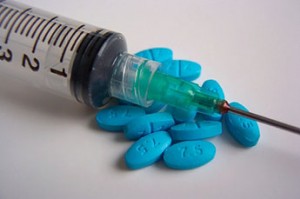
How to Take Narcotics ?
Taking narcotics, which are potent medications often used for pain relief, should always be done under the guidance and prescription of a healthcare provider. Here are some general guidelines for taking narcotics safely:
- Prescription and Dosage: Narcotics are typically prescribed by a healthcare provider. Always take narcotics exactly as prescribed. Do not take more than the prescribed dose, and do not take them more frequently than instructed.
- Follow Instructions: Carefully read and follow the instructions provided by your healthcare provider or the medication label. If you have any questions or concerns about your medication, don’t hesitate to ask your healthcare provider or pharmacist.
- Timing: Take narcotics at the recommended intervals. Some narcotics are taken as needed for pain relief, while others are taken regularly on a schedule. Follow your healthcare provider’s instructions regarding timing.
- Food and Drink: Some narcotics can be taken with or without food, while others should be taken with a meal to reduce the risk of stomach upset. Follow your healthcare provider’s recommendations regarding food and drink.
- Avoid Alcohol: Do not consume alcohol while taking narcotics. Alcohol can enhance the sedative effects of narcotics and increase the risk of adverse reactions.
- Monitoring: Pay attention to how the medication affects you. Narcotics can cause drowsiness, dizziness, and impaired coordination. Do not drive or operate heavy machinery if you are experiencing these side effects.
- Combination with Other Medications: Inform your healthcare provider of all medications, including over-the-counter drugs and supplements, that you are taking. Some medications can interact with narcotics, potentially leading to dangerous side effects.
- Avoid Crushing or Altering: Do not crush, break, or alter extended-release or long-acting forms of narcotics. This can lead to a dangerous release of the medication all at once.
- Storage: Store narcotics in a secure place, out of reach of children and pets. Follow any specific storage instructions provided with the medication.
- Disposal: Dispose of unused or expired narcotics properly, following local guidelines and regulations. Many communities have drug take-back programs to safely dispose of medications.
- Tolerance and Dependence: Be aware that narcotics have the potential for tolerance (requiring higher doses for the same effect) and physical dependence. Do not stop taking them abruptly without consulting your healthcare provider, as withdrawal symptoms can occur.
- Reporting Side Effects: If you experience any unusual or severe side effects while taking narcotics, contact your healthcare provider immediately.
Always remember that the use of narcotics should be temporary and closely monitored by a healthcare provider.
When to Use Narcotics ?
Here are some common situations in which opioids may be considered:
- Post-Surgery Pain: Opioids are often used for acute pain management following surgical procedures, such as major surgeries or orthopedic surgeries. They can provide effective pain relief during the immediate recovery period.
- Severe Trauma or Injury: In cases of severe traumatic injuries, like fractures or burns, opioids may be used to control intense pain during the healing process.
- Cancer Pain: Opioids are commonly prescribed for individuals with cancer to manage cancer-related pain. They can help improve the quality of life for cancer patients by reducing pain and allowing for better functioning.
- End-of-Life Care: Opioids are frequently used in palliative care to provide comfort and alleviate pain for individuals with terminal illnesses.
- Chronic Pain Management: In some cases, opioids may be considered for chronic pain management when other treatments have been ineffective or when the benefits outweigh the risks. However, their use for chronic pain is controversial due to concerns about addiction and long-term side effects.
- Pain Associated with Medical Procedures: Opioids may be used during certain medical procedures, such as colonoscopy or endoscopy, to provide sedation and pain relief.
Opioids are a class of drugs naturally found in the opium poppy plant. Some prescription opioids are made from the plant directly, and others are made by scientists in labs using the same chemical structure. Opioids are often used as medicines because they contain chemicals that relax the body and can relieve pain. Prescription opioids are used mostly to treat moderate to severe pain, though some opioids can be used to treat coughing and diarrhea.
Narcotics work by binding to receptors in the brain, which blocks the feeling of pain. When used carefully and under a doctor’s direct care, they can be effective at reducing pain. Almost always, you should not use a narcotic medicine for more than 3 to 4 months.
Side Effects of Narcotics
Narcotics, which are a class of drugs that includes opioids, can have various side effects. The specific side effects and their severity can vary depending on the type of narcotic, the dosage, the individual’s response, and whether the drug is being used as prescribed or misused. Common side effects of narcotics can include:
- Drowsiness: Narcotics can cause drowsiness or sedation, which can impair a person’s ability to concentrate, operate machinery, or drive safely.
- Dizziness: Feeling dizzy or lightheaded is a common side effect, which can contribute to a risk of falls or accidents.
- Nausea and Vomiting: Many people experience nausea and may even vomit when taking narcotics. This side effect can be especially prevalent when first starting the medication but may improve over time.
- Constipation: Opioid-induced constipation is a well-known side effect of narcotics. It can be severe and may require additional medications or lifestyle changes to manage.
- Itching: Some individuals may experience itching or skin irritation as a side effect of narcotics.
- Dry Mouth: Narcotics can lead to dry mouth, which can be uncomfortable.
- Sweating: Excessive sweating, also known as diaphoresis, can occur as a side effect.
- Mood Changes: Some individuals may experience mood changes, including feelings of euphoria, anxiety, or irritability.
- Tolerance: Over time, some people may develop tolerance to the pain-relieving effects of narcotics, requiring higher doses for the same level of pain relief.
- Dependence and Withdrawal: With prolonged use, physical dependence can develop, leading to withdrawal symptoms when the medication is reduced or stopped abruptly. Withdrawal symptoms can include restlessness, anxiety, muscle aches, and nausea.
- Respiratory Depression: In high doses or when misused, narcotics can cause slow and shallow breathing, which can be life-threatening.
It’s important to note that the risk of side effects and the potential for addiction or misuse are reasons why healthcare providers carefully consider the use of narcotics and often prescribe them for short-term use or in specific situations where the benefits outweigh the risks.
The Risks of Narcotics Overdose
Narcotics, also known as opioids, carry a significant risk of overdose, which can be life-threatening. An overdose occurs when a person takes more of the drug than their body can handle, leading to harmful and potentially fatal effects. Here are some of the key factors and risks associated with narcotics overdose:
- Respiratory Depression: Narcotics can cause respiratory depression, which means they slow down and suppress breathing. An overdose can result in dangerously shallow or even stopped breathing, leading to oxygen deprivation and potential organ damage.
- Central Nervous System Depression: Narcotics also depress the central nervous system, leading to drowsiness, confusion, and impaired consciousness. In an overdose, a person may become unresponsive or lose consciousness.
- Decreased Heart Rate: Opioid overdose can lead to a slowed heart rate (bradycardia) or even cardiac arrest, which can be fatal.
- Constricted Pupils: One physical sign of opioid overdose is pinpoint or constricted pupils, which is often observed in overdose situations.
- Cyanosis: As oxygen levels drop, the skin and lips may turn bluish or grayish, a condition known as cyanosis, indicating severe oxygen deprivation.
- Nausea and Vomiting: Opioid overdose can cause severe nausea and vomiting, which can lead to aspiration (inhaling vomit), further complicating the respiratory distress.
- Loss of Consciousness: In severe opioid overdose, individuals may lose consciousness and be difficult to awaken.
- Death: Without prompt medical intervention, opioid overdose can be fatal due to respiratory failure or cardiac arrest.
Several factors increase the risk of opioid overdose:
- High Doses: Taking a high dose of opioids, especially if not prescribed or if misused, increases the risk of overdose.
- Combining with Other Substances: Combining opioids with alcohol, sedatives, benzodiazepines, or other drugs can enhance the depressive effects and increase overdose risk.
- Tolerance Changes: Individuals who have developed tolerance to opioids and then reduce or stop their use (e.g., during a period of abstinence or after a stint in rehab) are at increased risk because their tolerance level has decreased.
- Street Drugs: Illicitly obtained opioids, such as heroin or illicitly manufactured fentanyl, pose a higher overdose risk due to inconsistent potency and purity.
If you suspect someone is experiencing an opioid overdose, it is crucial to seek immediate medical attention. Naloxone (Narcan) is an opioid overdose reversal medication that can be administered to temporarily reverse the effects of opioids and restore breathing. Many first responders, healthcare providers, and even some community organizations have access to naloxone and can administer it in emergency situations.
How to Treat Narcotics Overdose ?
Treating a narcotics overdose is a medical emergency that requires immediate intervention. If you suspect someone is experiencing a narcotics overdose, follow these steps:
- Call 911: Dial emergency services immediately to request medical assistance. Provide the dispatcher with as much information as possible, including the person’s condition, any known drug use, and their location.
- Stay with the Person: Do not leave the person alone. Stay with them and monitor their vital signs, such as breathing and pulse.
- Administer Naloxone (Narcan): If you have access to naloxone (brand name Narcan), and you are trained in its use, administer it as directed on the packaging. Naloxone is an opioid overdose reversal medication that can temporarily reverse the effects of opioids and restore normal breathing. It should be administered promptly if available.
- Perform Rescue Breathing: If the person is not breathing or has shallow, irregular breathing, perform rescue breathing. Tilt their head back, lift the chin, and give them rescue breaths until emergency responders arrive.
- Check for Signs of Circulation: If the person’s pulse is absent or extremely weak, you may need to perform CPR (cardiopulmonary resuscitation). Continue CPR until professional medical help arrives.
- Do Not Administer Other Drugs: Avoid giving the person any other substances or medications, as it can complicate their condition.
- Stay Calm and Provide Information: When emergency responders arrive, provide them with any relevant information about the person’s condition and any drugs involved.
- Follow Up with Medical Care: Even if the person appears to recover after naloxone administration, they should seek immediate medical evaluation. The effects of naloxone are temporary, and the person may still be at risk of returning to overdose.
It’s important to act quickly when you suspect a narcotics overdose, as time is critical in preventing severe harm or death. Naloxone can be a life-saving intervention, but it should not replace the need for professional medical evaluation and care.
Additionally, if you or someone you know is at risk of opioid overdose due to opioid misuse or addiction, consider seeking help from a healthcare provider, addiction treatment program, or support organization. Treatment and support services are available to address opioid use disorder and reduce the risk of future overdoses.
Alternative Names
Painkillers; Drugs for pain; Analgesics; Opioids
Narcotics May Lead to Addiction
Repeated misuse of prescription opioids can lead to a substance use disorder (SUD), a medical illness which ranges from mild to severe and from temporary to chronic. Addiction is the most severe form of an SUD. An SUD develops when continued misuse of the drug changes the brain and causes health problems and failure to meet responsibilities at work, school, or home.
People addicted to an opioid medication who stop using the drug can have severe withdrawal symptoms that begin as early as a few hours after the drug was last taken. These symptoms include:
- muscle and bone pain
- sleep problems
- diarrhea and vomiting
- cold flashes with goose bumps
- uncontrollable leg movements
- severe cravings
These symptoms can be extremely uncomfortable and are the reason many people find it so difficult to stop using opioids. There are medicines being developed to help with the withdrawal process, including lofexidine, a non-opioid medicine designed to reduce opioid withdrawal symptoms that was approved by the U.S. Food and Drug Administration (FDA) in 2018.
The FDA has also approved sale of a device, NSS-2 Bridge, that can help ease withdrawal symptoms. The NSS-2 Bridge is a small electrical nerve stimulator placed behind the person’s ear, that can be used for up to five days during the acute withdrawal phase.
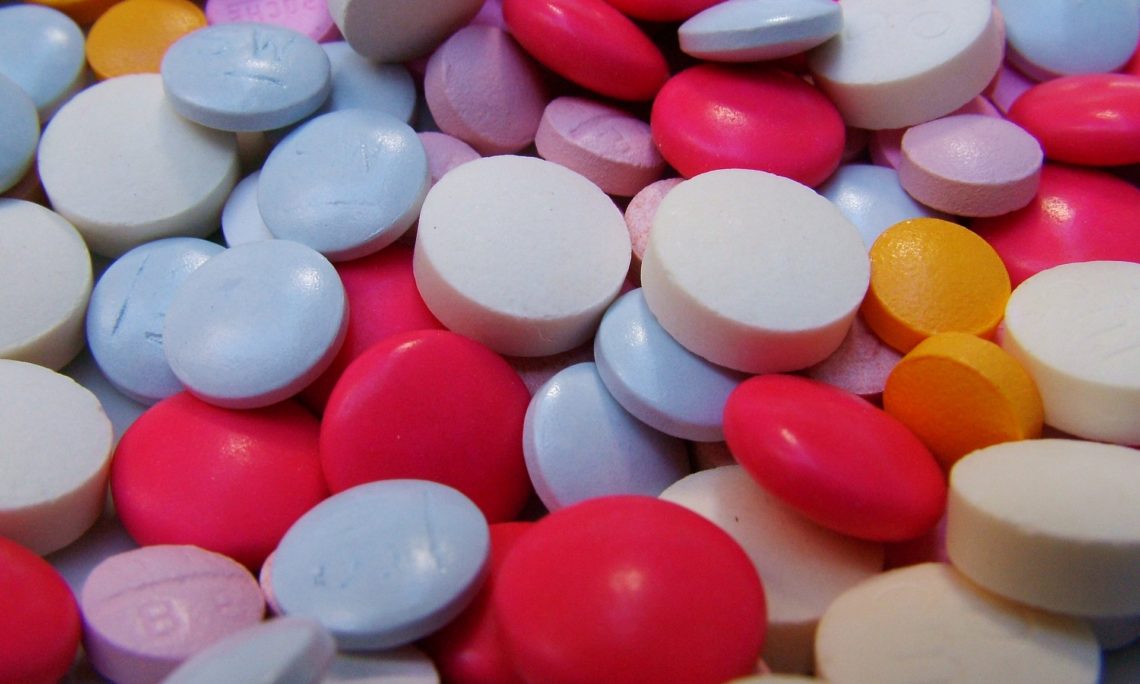
How to Treat Narcotics Addiction ?
A range of treatments including medicines and behavioral therapies are effective in helping people with opioid addiction.
Two medicines, buprenorphine and methadone, work by binding to the same opioid receptors in the brain as the opioid medicines, reducing cravings and withdrawal symptoms. Another medicine, naltrexone, blocks opioid receptors and prevents opioid drugs from having an effect.
narcotics, also known as opioids, have a significant potential for addiction. Opioid addiction, often referred to as opioid use disorder, is a chronic medical condition characterized by the compulsive use of opioids, even in the face of negative consequences. This addiction can have serious physical, psychological, and social consequences for individuals and their communities.
Several factors contribute to the high risk of addiction associated with narcotics:
- Brain Changes: Opioids affect the brain’s reward system, leading to the release of dopamine, a neurotransmitter associated with pleasure and reward. Repeated use of opioids can lead to changes in the brain’s reward circuitry, making it difficult for individuals to control their drug use.
- Physical Dependence: With prolonged use, the body can become physically dependent on opioids. This means that when a person stops using opioids, they may experience withdrawal symptoms, such as nausea, sweating, muscle aches, and anxiety, which can reinforce continued drug use.
- Tolerance: Over time, individuals may develop tolerance to the pain-relieving and euphoric effects of opioids, requiring higher doses to achieve the same effects. This can lead to escalating drug use and increased risk of overdose.
- Psychological Factors: Opioid addiction is influenced by psychological factors, including stress, trauma, and co-occurring mental health disorders. These factors can contribute to the development and persistence of addiction.
- Easy Accessibility: The availability of prescription opioids and the illicit opioid market contribute to the ease of obtaining these drugs, increasing the risk of misuse and addiction.
- Social and Environmental Factors: Social and environmental factors, such as peer pressure and exposure to opioids within communities, can also contribute to opioid addiction.
It’s important to recognize that opioid addiction is a treatable medical condition. Effective treatments for opioid use disorder include medications (e.g., methadone, buprenorphine, naltrexone) combined with counseling and support services. These evidence-based treatments can help individuals reduce or eliminate their opioid use, improve their quality of life, and reduce the risk of overdose.
How to Prevent Narcotics Addiction ?
Preventing narcotics addiction, especially in the context of opioid use, is crucial to reducing the impact of the opioid epidemic. While addiction prevention is a complex and multifaceted challenge, there are several strategies and measures that can help mitigate the risk of narcotics addiction:
- Education and Awareness:
- Public Education: Promote public awareness about the risks and potential consequences of narcotics, including opioids. Inform individuals about the potential for addiction, overdose, and other health risks associated with these substances.
- Healthcare Provider Education: Train healthcare providers on responsible opioid prescribing practices, including proper assessment of pain, monitoring of patients, and recognizing signs of addiction.
- Responsible Prescribing:
- Healthcare Guidelines: Encourage healthcare providers to follow clinical guidelines for opioid prescribing, which include assessing patients’ pain levels, considering non-opioid alternatives, and using the lowest effective dose for the shortest duration.
- Prescription Drug Monitoring Programs (PDMPs): Implement and use PDMPs to track and monitor prescription opioid use, helping to identify potential misuse or “doctor shopping.”
- Alternative Pain Management:
- Explore Non-Opioid Options: Encourage healthcare providers to consider non-opioid pain management options, such as physical therapy, non-opioid medications, and interventional procedures, when appropriate.
- Pain Management Plans: Work with healthcare providers to develop comprehensive pain management plans tailored to individual patient needs.
- Safe Disposal and Storage:
- Disposal Programs: Promote safe disposal of unused or expired prescription opioids through drug take-back programs or pharmacy disposal kiosks.
- Safe Storage: Encourage individuals to store prescription opioids securely, out of reach of children and others who might misuse them.
- Naloxone Access:
- Increase Access: Make naloxone, an opioid overdose reversal medication, readily available to first responders, healthcare providers, and individuals at risk of overdose. Training on its administration is also essential.
- Screening and Intervention:
- Routine Screening: Implement routine screening for substance use disorders, including opioids, in healthcare settings, so that early intervention can be provided when necessary.
- Behavioral Health Services: Ensure access to behavioral health services for individuals who may be at risk of addiction or who have a history of substance use disorder.
- Support and Treatment:
- Treatment Availability: Expand access to evidence-based addiction treatment services, including medication-assisted treatment (MAT) with medications like methadone, buprenorphine, and naltrexone.
- Support Services: Provide counseling, peer support, and wraparound services to individuals in recovery to address the complex factors contributing to addiction.
- Community-Based Prevention:
- Community Programs: Support community-based prevention programs, youth education initiatives, and support groups to raise awareness and build resilience against addiction.
- Harm Reduction: Implement harm reduction strategies, such as syringe exchange programs, to reduce the risks associated with drug use.
- Legislation and Regulation:
- Legislative Measures: Advocate for and support legislation and policies aimed at addressing the opioid epidemic, including measures to regulate opioid manufacturing and distribution.
Preventing narcotics addiction is a comprehensive effort that involves healthcare providers, policymakers, communities, families, and individuals.
Pain Medications, Pain Relief, and Pain Management
